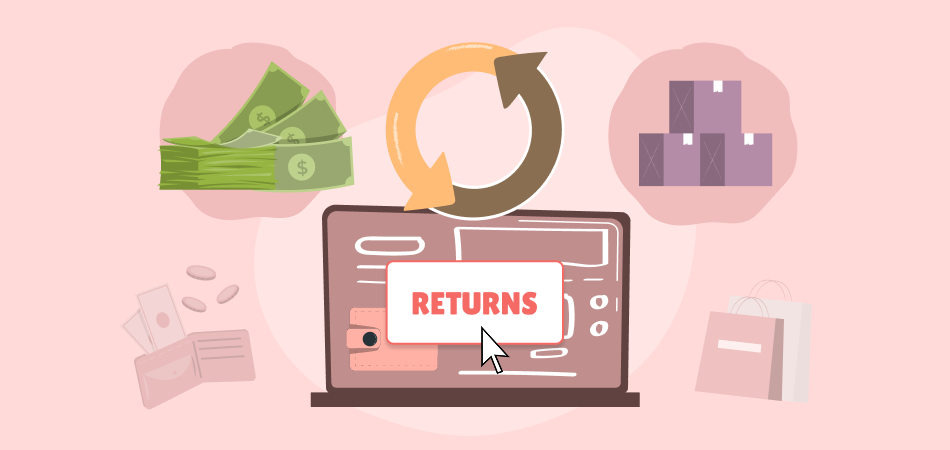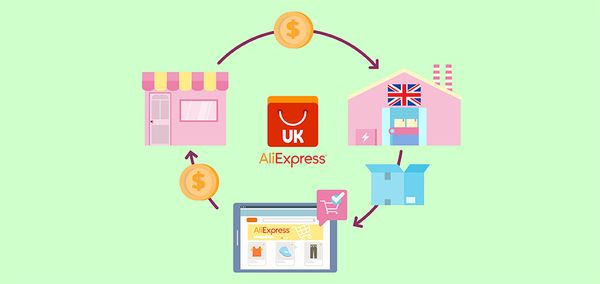How to Reduce Dropshipping Returns as a Dropshipper

Managing returns can feel like a logistical nightmare if you don’t control the product’s quality, packaging, or delivery firsthand. But with the right strategies, you can significantly reduce return rates, protect your profit margins, and keep your customers happy.
Here, we explain why dropshipping returns happen, how to handle them efficiently, and most importantly, how to prevent them. Let’s dive into actionable tactics that every dropshipper should implement.
Why Encouter Dropshipping Returns
Returns in dropshipping are more than just an inconvenience, they’re often a reflection of deeper gaps in communication, product selection, or customer expectations.
Let’s explore four of the most common and impactful reasons behind dropshipping returns.
1. Product Doesn’t Match the Description
One of the most frustrating experiences for a customer is receiving a product that looks or functions differently from what they expected.
This typically happens when product listings are vague, misleading, or simply copied from a supplier’s poorly translated catalog.

|
Find Better Supplier For Products DSers Supplier Optimizer - One click to filter out the most proper suppliers for your products |
Imagine ordering a minimalist leather wallet and receiving something made of cheap synthetic material with a different color tone, this disconnect is a major return trigger.
As a dropshipper, if you don't customize and clarify your product details, you risk setting false expectations, even unintentionally.
2. Sizing and Fit Issues
For any product that comes in different sizes, like apparel, shoes, or accessories, fit is a critical factor. The problem often lies in inconsistent sizing charts, which vary across countries and suppliers.
If a customer orders a "Medium" hoodie expecting U.S. sizing and receives a much smaller Asian-sized equivalent, they’re likely to return it in frustration.
Even when sizing charts are provided, a lack of visuals or measuring guides can make it difficult for buyers to judge what’s right for them. This kind of return can be easily avoided with the right setup and communication.
3. Poor Product Quality
Product quality is a common concern in dropshipping, especially when sourcing from platforms like AliExpress, where the quality spectrum can be vast. Customers expect a product that works as advertised and lasts a reasonable amount of time.
If it breaks, malfunctions, or just feels cheap upon arrival, they may not only return it, but they may also leave negative reviews, initiate chargebacks, or never shop with you again.
Without handling the product yourself before listing it, you’re essentially blindfolded in terms of quality control, which increases your return risk.
4. Long or Unclear Shipping Times
While customers might tolerate a slightly longer delivery window when they know what to expect, unpredictability in shipping creates anxiety.
If the tracking number doesn't update or the product arrives well after the estimated date, the customer experience is soured. When buyers think their item is lost or delayed indefinitely, they often request refunds or file disputes.

|
Tracking Number with Auto Sync Auto Sync Tracking Numbers - Automatically sync the tracking number from AliExpress to your store |
In some cases, the product may eventually arrive, but the damage to the shopping experience is already done.
Dropshippers who don’t clearly communicate delivery expectations or who rely solely on slow, unreliable logistics partners are at a much higher risk for these types of returns.
How to Handle Dropshipping Returns
Handling returns is never fun, but when done well, it can be an opportunity to show great customer service and build trust. A smooth return process not only reduces stress for your buyers but also protects your brand's reputation, especially in a marketplace where reviews and word-of-mouth travel fast.
1. Clear Return Policy
The first and most crucial step is to establish a return policy that is clear and easy for customers to understand. This should be accessible on your website, ideally linked in your main navigation menu and on individual product pages.
Your return policy needs to outline eligibility (such as timeframes and product conditions), explain whether customers are responsible for return shipping, and detail the steps they should follow to initiate the process.
2. Effective Communication
Equally essential is your relationship with your supplier. Some dropshipping suppliers, especially those on platforms like CJdropshipping or Spocket, offer partial refunds or handle replacements without needing a physical return, particularly in cases of damaged or incorrect items.
But this isn’t always the norm, so you should communicate directly with your supplier beforehand to understand their policies. This allows you to confidently craft your policy, knowing what your supplier will or won’t support on the backend.
3. Quick Response
When a customer initiates a return, how quickly and empathetically you respond matters a lot. Even if the issue was outside your control (like a delay in shipping), your response shapes how the customer perceives your business.
Be transparent, express understanding, and provide solutions, whether it's a replacement, refund, or discount on a future purchase.
For products that don't need to be physically returned, consider offering store credit or a partial refund as a compromise that maintains goodwill while minimizing your costs.
4. Return Reason Tracking
Tracking return reasons is another valuable part of the process. Categorize returns by cause, such as quality issues, size mismatches, or shipping problems, and regularly review this data.
Identifying patterns helps you take corrective action, whether it’s removing a problematic product, improving a description, or switching suppliers.
How to Reduce Dropshipping Returns
Dropshipping returns can be costly, but the good news is that many of them are preventable. With a proactive approach, clear communication, and better tools, you can dramatically reduce your return rate while building stronger customer trust.
1. Product Quality Control
One of the main reasons customers return items is disappointment with quality. As a dropshipper, you might never physically handle the products you sell, which makes quality control even more important.
Always source from reliable suppliers with positive reviews and high fulfillment ratings. Whenever possible, order product samples to assess materials, durability, packaging, and overall presentation.
If the product doesn’t meet your standards, it won’t meet your customers’ either.
2. Clear Product Descriptions
Misleading or vague descriptions can lead to mismatched expectations and that means returns. Take the time to craft clear, honest product listings that reflect exactly what the buyer will receive.
Highlight product specs, features, materials, and limitations. The more accurate your description, the less likely a customer will feel misled.
Avoid copying the supplier’s default text, reword it in your brand’s voice and fill in any gaps they leave out.
3. Customer Reviews and Feedback
Featuring real customer feedback and product photos on your site gives potential buyers the confidence they need to make informed decisions. Reviews not only boost conversions but also set realistic expectations.
Invite satisfied customers to share their feedback and display the reviews prominently on your product pages. If others are happy with their purchase, new customers are less likely to be disappointed and less likely to return their order.
4. Easy-to-Read Size Guides
Returns due to sizing issues are especially common with apparel and footwear. A detailed size guide, ideally tailored to your supplier’s sizing standards is crucial.
Include measurements in inches or centimeters and specify how the item fits (e.g., true to size, runs small, or loose fit). Visual aids or illustrations can further improve clarity, helping buyers select the correct size on their first try.
5. Transparent Shipping Policies
Customers tend to be more patient when they’re informed upfront. If your shipping times are longer than usual, be transparent and display this information on product pages and during checkout.

|
Pre-set the Best Shipping Methods DSers Shipping Settings - Pre-select your favorite shipping method to save money and time |
Provide estimated delivery windows, offer tracking updates, and explain the reasons behind longer shipping times (e.g., international sourcing). Transparency reduces anxiety and builds trust, even if shipping takes a few extra days.
6. Effective Customer Support
Sometimes, customers just need quick help or clarification before deciding to return a product. A fast and helpful support system can prevent many return requests from escalating.
Integrate live chat or automated help desk tools so buyers can reach you easily. Respond to questions promptly and with empathy, especially for shipping delays, damaged items, or sizing confusion.
7. Post-Purchase Communication
Post-purchase communication plays a key role in preventing returns. Send thank-you emails, tracking info, and product usage tips. These small touches reassure buyers that their order is in progress and help guide them through the wait.
You can also include troubleshooting guides or FAQs for more complex products. Sending a follow-up email at the right time can help ease buyers’ remorse and reinforce a positive purchase experience.
8. Streamlined Return Process
While the goal is to reduce returns, they’ll still happen. When they do, having a streamlined, customer-friendly return process makes all the difference.
Be clear about your policy, how long customers have to return, what condition the item must be in, and whether return shipping is required.
When possible, offer store credit or partial refunds without asking customers to ship the item back, especially for low-cost products.
9. Upselling and Cross-Selling
Surprisingly, using strategic upselling and cross-selling techniques can contribute to fewer returns by helping customers choose the right products. By bundling complementary products, like offering a phone case with a smartphone or a shoe cleaner with sneakers, you help customers get more out of their purchase.
This approach boosts value and satisfaction, reducing the chances of returns caused by “incomplete” experiences or unmet expectations.
10. Monitor Return Reasons
Finally, take the time to monitor why returns happen. Categorize each one: Was it quality, sizing, shipping, or customer confusion? Look for patterns in the data and act accordingly.
If a particular product has a high return rate, it may need to be updated, replaced, or removed. Regular analysis helps you continuously improve your product selection and customer experience.
Final Thoughts
Dropshipping returns are part of running any dropshipping business, but they don’t have to be a profit killer. As a dropshipper, you can control the customer experience, communication, and product accuracy to reduce the return rates.
Dropshipping is about smart systems, not just selling. And mastering your return strategy is a vital piece of that puzzle.











 Company
Company
 Why Choose DSers
Why Choose DSers
 Blog
Blog
 Help Center
Help Center




 Live Chat
Live Chat